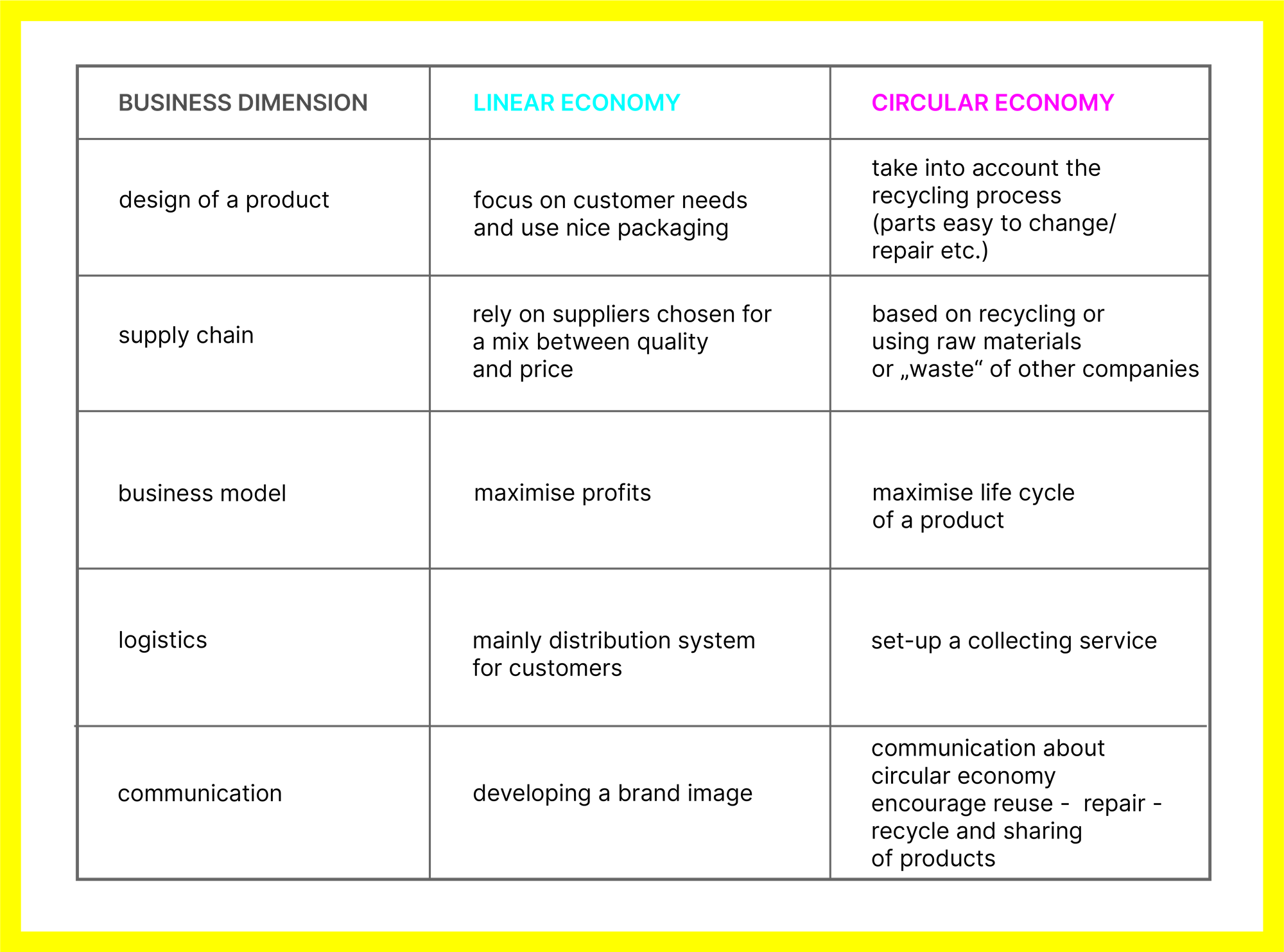We are designing Pocket Reform as a product for the Circular Economy. But what does that mean?
Circular economy is based on the principles of designing out waste, on retaining products and materials for long term use, and on regenerating natural systems.
The intention
In contrast to traditional linear-economy, circular economy emphasizes resource efficiency. By designing out waste right from the start and then reusing, repairing, remanufacturing and reintegrating secondary materials back into the cycle, it is possible to preserve the maximum value of resources.The main intention of the concept of circular economy is to replace the existing, open production systems that are based on a linear consumption model of take, make, use and waste with closed systems that reuse resources and conserve energy. While the linear consumption model cannot last long for a growing population in a finite resource world, the closed loop system helps in adapting to the limited resources and simultaneously nourishing the natural resource stocks.

Even though ‘circular economy’ is now trending and is increasingly supported by governments and policies like the European Green Deal, the idea of closing the loop and circularity in resource consumption is not new at all. One of the first mentions of closed loop material flows as a viable economic model was found in 1966 in Kenneth E. Boulding’s paper, The Economics of the Coming Spaceship Earth. In the European Union, the circular economy concept was introduced through Germany’s environmental policy in 1996 with the Kreislaufwirtschaftsgesetz (KrWG), a Federal German waste law designed to promote recycling and protection of natural resources (Kunig 2003). One of today's most famous circular economy advocates, the Ellen MacArthur Foundation was created in 2010.
Circular economy not only leads to less waste and resource consumption it also brings many other advantages with it. A revolution in technology created by implementing circular economy models can create a net benefit of 1.8 billion euros per year and a reduction of CO2 emissions by 48% by 2030, which is 0.9 trillion euros more per year resulting from implementation of current linear models (McKinsey Center for Business and Environment, 2015).
How to be circular
Designing out waste and designing for closed loops is easier said than done.Technology and business status quo has been developed with a linear model. This needs to be rewritten in order to have a positive impact on waste reduction. In developing Pocket Reform and working on consumer electronics, including the circular approach is one tool to achieve a higher degree of sustainability. Seeing that it is still a challenge to implement such a concept, we proactively decided that this is the only direction for our product to head towards and to uphold this decision no matter what. Circularity is not only a design and production decision it also affects other business dimensions.

We envision a world where companies actively tap into their power and responsibility to protect the planet. We are developing Pocket Reform to do just this. Circular Economy is a (new) way to design, make and use things within planetary boundaries.
Sources:
European Commission, PAPERCHAIN T3.1 Structure – Analysis of the existing and emerging approaches of circular economy models in PPI. Brussels: European Commision, 2017.
Kunig, Paetow, Versteyl, KrW- / AbfG Circulation and Waste Management, Commentary, 2nd Edition. Munich: CH Beck, 2003.
McKinsey Center for Business and Environment, Growth within: a circular economy vision for a competitive Europe, 2015.
